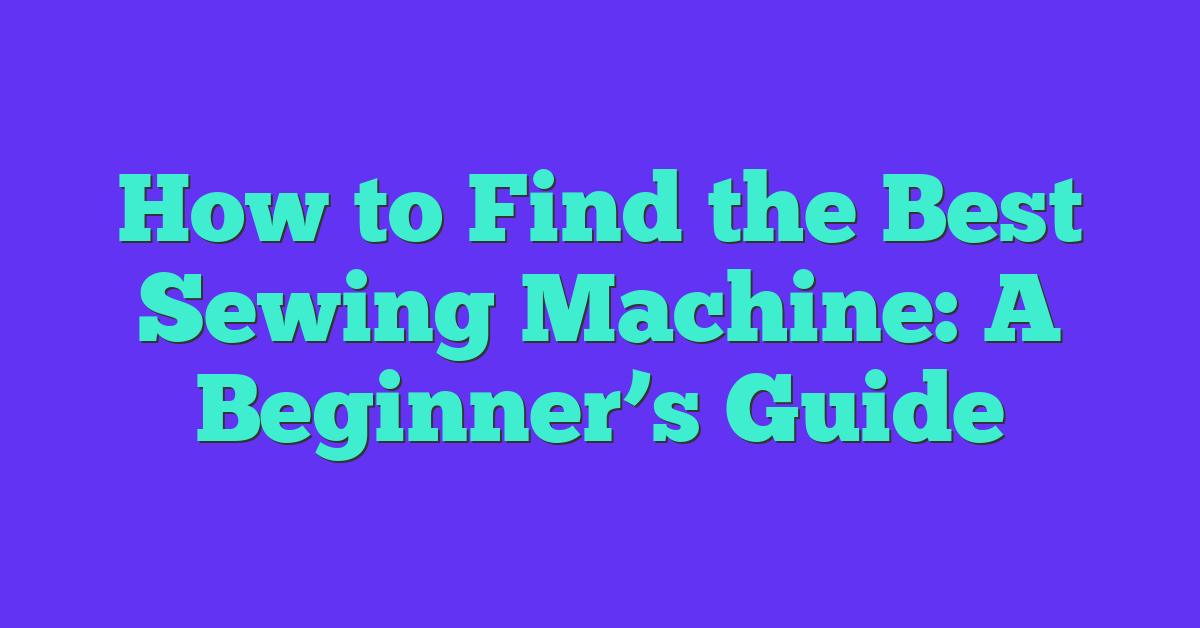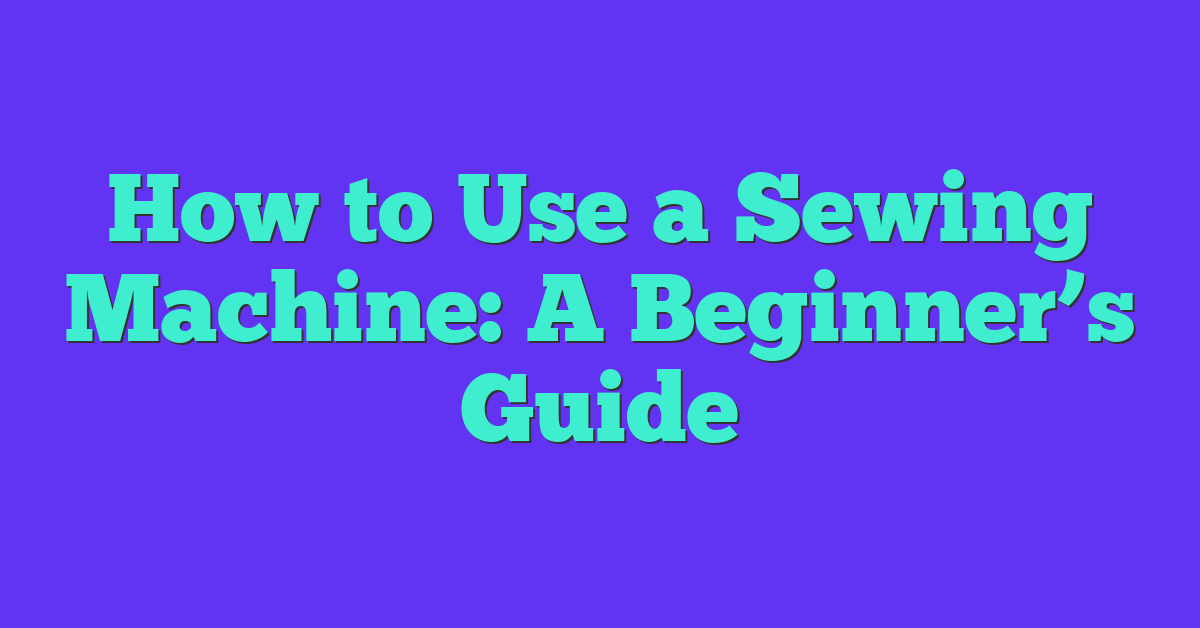Embroidery can be a beautiful way to personalize your projects, but it can be frustrating when a design slips out of place. I’ve been there, staring at a crooked pattern and feeling like my hard work is all for nothing. Thankfully, fixing a slipped embroidery design isn’t as daunting as it seems.
Understanding Slipped Embroidery Designs
Slipped embroidery designs often occur during the stitching process, leading to frustration for many crafters. Understanding the reasons behind these shifts can help in making necessary corrections.
Causes of Slipped Designs
- Hooping Issues: Incorrect hooping can result in uneven tension. When fabric isn’t taut, it shifts during stitching.
- Incorrect Stabilizer: Using the wrong type of stabilizer can cause designs to slip. Lightweight fabric requires a suitable stabilizer for support.
- Inadequate Tension: Improper tension settings on the embroidery machine can lead to loose stitches, allowing fabric movement.
- Fabric Characteristics: Some fabrics, like knits, stretch more than others. This flexibility can cause designs to shift if not properly supported.
- Needle Choice: Using a needle that isn’t appropriate for the fabric or thread can lead to issues. A dull or damaged needle may not create the desired stitch.
Identifying the Problem
To identify a slipped embroidery design, look for these signs:
- Misalignment: Check for any noticeable discrepancies in the design’s placement relative to the fabric.
- Stitch Gaps: Noticeable gaps or uneven stitching might indicate that the fabric shifted during the process.
- Bunched Fabric: If the fabric appears bunched or distorted, it suggests that the tension was incorrect, leading to a slipped design.
- Design Quality: Poor quality in the completed design often points to issues with stabilizers or hooping.
Recognizing these factors can help in addressing and fixing slipped embroidery designs effectively.
Preparing to Fix the Slipped Design
Before starting to fix a slipped embroidery design, gathering the right tools and materials is crucial. With the proper items on hand, the repair process becomes more manageable and efficient.
Tools and Materials Needed
- Embroidery Machine: Use your sewing machine to facilitate adjustments quickly.
- Stabilizer: Choose a suitable stabilizer based on fabric type. Fusible stabilizers offer support while ensuring design integrity.
- Embroidery Thread: Select a thread that matches the original design color for seamless repairs.
- Needles: Keep different needle types available, including universal and specific types like ballpoint needles for knit fabrics.
- Small Scissors or Snips: Use these for trimming excess threads during the correction process.
- Marking Pens or Pencils: Utilize these to outline where the design misalignment occurred.
- Iron: A steam iron helps smooth out any creases in the fabric before rehooping.
Safety Precautions
- Avoid Needle Injuries: Always keep fingers clear of the needle area when operating the embroidery machine.
- Prevent Eye Strain: Use adequate lighting when stitching or troubleshooting, as this reduces strain and prevents accidents.
- Manage Thread and Fabric: Keep the workspace tidy to reduce the risk of tripping or getting caught on loose threads.
- Tools Safety: Store scissors and sharp tools in a designated area to prevent accidental cuts.
- Secure Machine Cords: Ensure that machine power cords are neatly placed to avoid trip hazards while working.
Step-by-Step Guide to Fixing the Design
Fixing a slipped embroidery design requires careful attention to detail. Follow these steps to restore your work to its original quality.
Adjusting the Fabric Tension
Adjusting the fabric tension ensures the design lays flat. First, check the machine settings; higher tension usually works better for thicker fabrics. Test the tension by stitching a sample on a scrap piece of the same material. If the stitches bunch up or the fabric puckers, lower the tension. If they gap, increase it slightly. Once the right tension is established, re-hoop the fabric, ensuring it’s taut without distorting the design.
Realigning the Design
Realigning the design involves making precise adjustments. Remove the fabric from the hoop, and carefully assess the misalignment. I often use a marking pen or pencil to trace the correct placement on the fabric. Carefully re-hoop it, aligning the marked points with the needle’s drop position. It might help to baste the outline of the design on the fabric before proceeding. This way, I can confirm the alignment before finalizing the embroidery.
Secure the Threads
Securing the threads prevents future slipping and enhances design durability. After re-stitching the alignment, I trim any excess threads near the design’s edges. Ensure each thread tail is firmly secured with a knot at the back of the embroidery. Additionally, I utilize fray check on thread ends for extra security; this keeps them from loosening over time. Finally, give the fabric a gentle iron, ensuring the stitches lie flat and maintain their integrity.
Preventative Measures for Future Designs
I emphasize that taking preventative measures can significantly reduce the risk of slipped embroidery designs in future projects. Two main areas to focus on include selecting the right stabilizer and utilizing proper hooping techniques.
Choosing the Right Stabilizer
Selecting an appropriate stabilizer directly impacts the stability of your embroidery design. I recommend considering the following types of stabilizers based on fabric and design specifics:
- Tear-Away Stabilizers: Best for sturdy fabrics like canvas or denim, they allow for easy removal after stitching.
- Cut-Away Stabilizers: Ideal for stretchy or lightweight fabrics, they provide necessary support and prevent design distortion.
- Water-Soluble Stabilizers: Perfect for delicate fabrics or intricate designs, they dissolve completely in water.
Matching the stabilizer to your fabric type and design complexity ensures that the embroidery retains its shape during stitching.
Proper Hooping Techniques
Utilizing proper hooping techniques is crucial in preventing design shifts. I suggest following these steps for effective hooping:
- Select an Appropriate Hoop Size: Choose a hoop that fits your design comfortably, allowing enough space for the fabric and stabilizer.
- Ensure Fabric Tension: Hooping should keep the fabric taut without overstressing it. Check that the fabric is smooth across the hoop before tightening.
- Align Fabric with Hoops: Place the fabric in the center of the hoop with clear alignment marks. Ensure that the fabric aligns with any guides or marks on the hoop.
- Secure Fabric Properly: Tighten the hoop until the fabric is firmly held. Test the tension by gently pressing the fabric in the center; it should not move.
By following these practices, I can create a solid foundation for my embroidery projects and significantly reduce the risk of misalignment issues in the future.

Conclusion
Fixing a slipped embroidery design doesn’t have to be a daunting task. With the right tools and a bit of patience I can easily get my project back on track. By understanding the common causes of misalignment and taking proactive steps I can ensure my future embroidery projects run smoothly.
It’s all about preparation and attention to detail. Whether it’s choosing the right stabilizer or mastering hooping techniques I’ve learned that these small adjustments can make a big difference. I’m excited to apply these tips and watch my embroidery skills grow. Happy stitching!

















